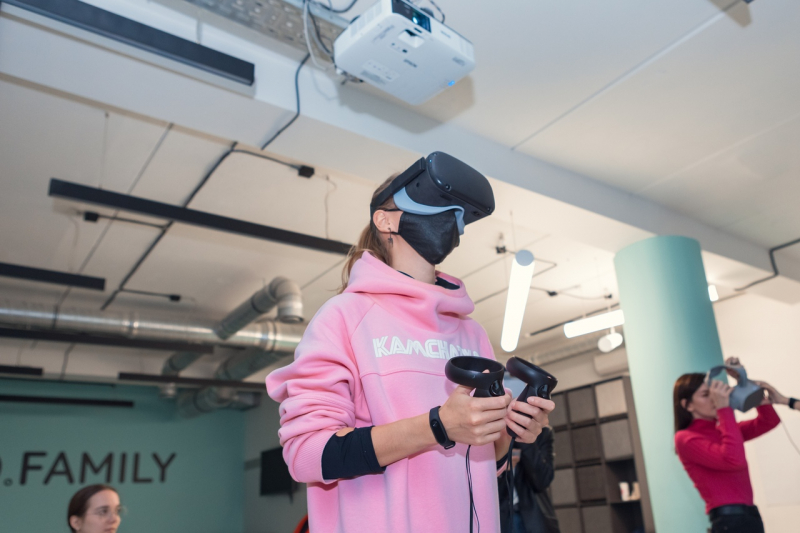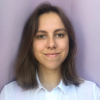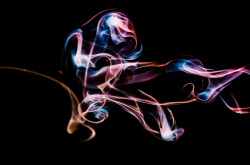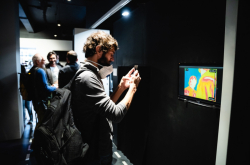Art & Science is a field that provides artists, representatives of other creative professions, and scientists with the opportunity to explore their common interests and develop joint projects at the intersection of science and art. The past Saturday, October 3, the participants of the Art & Science Marathon attended a pitch session, joined workshops given by media artists, and took part in a unique “speed science dating” event. The marathon also included a film screening and a talk by Dmitry Bulatov, an artist, curator, and science art researcher.
Most of the marathon’s events took place in a newly-restored former church built in 1869 in the Renaissance Revival style. First, it was part of the Imperial Commercial College, then the Church of the Sts. Peter and Paul, and finally, one of ITMO University’s buildings. The main event began with a pitch session that featured graduates and current students of the Art & Science Master’s program at ITMO.
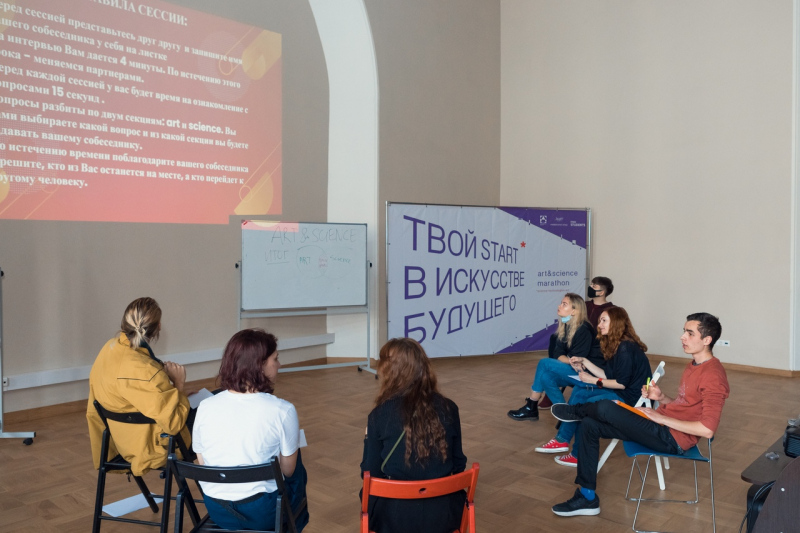
Members of the art group BIOROBOTY 019 found points of contact between science and art by asking the attendees for their input; the organizing team of the cultural and educational project Grounding shared their experiences of collaborating with the Dokuchaev Museum of Soil Science.
The third participant of the pitch session, the first-year Master’s student Kseniia Gorlanova, shared some insights into the specifics of creating projects at the intersection of science and art. Kseniia noted the possible challenges of teamwork and warned the participants that you can’t be liked by everyone – and that’s okay.
“As an artist, your expectations of how people will interact with your works might often not match reality. To an artist, their idea might seem unambiguously clear – it’s difficult for them to imagine that their work may be perceived in another light. But then it becomes evident that there are a thousand and one ways to interpret the same thing,” said Kseniia Gorlanova.
The event continued with a series of workshops that allowed their participants to try themselves as media artists and create their own Art & Science project on a subject of their choice.
Testing VR and filming in 360 degrees
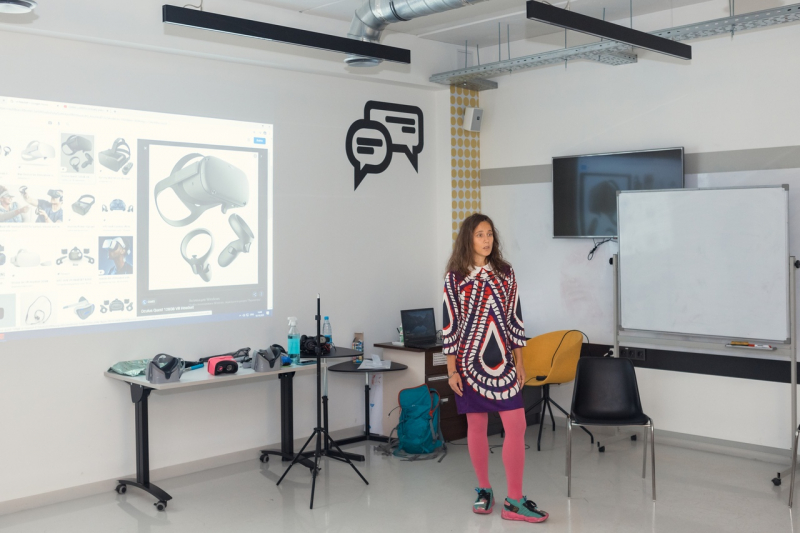
During her workshop Immersion in VR, Anna Tolkacheva, a media artist and researcher, spoke about VR technologies and immersive 360-degree videos, showcased examples of VR projects, and shared her experience with developing and applying these technologies.
The workshop’s participants learned about the varied types of VR devices and the relevant software – such as Google Cardboard, which is likely the simplest solution affordable to pretty much any smartphone owner. Participants were able to download the app on the spot, insert their phones into a special headset, and enjoy a 360-degree video.
Although this content format is often included in the umbrella term of VR, it is more correctly described as reality seen through VR. In order to enjoy the complete virtual reality experience, those in attendance also tested out the advanced headset and controllers Oculus Quest and Go. Then, they got to use special 360-degree cameras and shoot their own 5.7K videos.
Interactive wizarding school
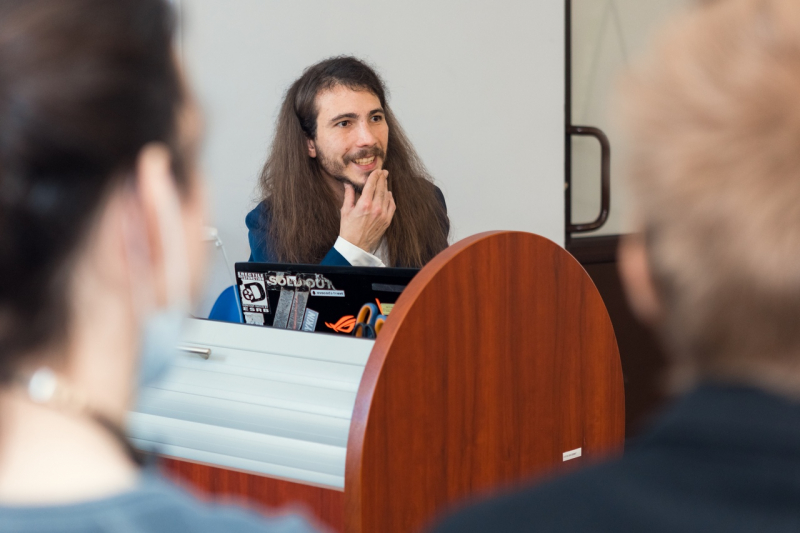
At the workshop led by the prominent media artist Ildar Yakubov, guests of the event learned how to use the visual programming software TouchDesigner. The program allows various multimedia devices to communicate with each other using the OSC (Open Sound Control) protocol and create interactive scenarios controlled via a smartphone.
To test the concept, the workshop’s participants converted their phones into remote controllers capable of transmitting information to the host’s laptop. Then, they split into teams to develop multiplayer game scenarios utilizing this technology. One of the teams designed an “exercise machine for wizards” that would reward players for correctly repeating magical gestures.
“You can make such a game by sending a stream of data from your phone’s accelerometer to the computer, which will in turn parse the stream for patterns similar to those it’s been given as examples of “correct” magical gestures. This is made possible thanks to the Wekinator software, which was developed to provide quick access to machine learning algorithms. Wekinator also uses the OSC protocol to receive training data, monitor the data stream in real time, and submit results to TouchDesigner,” explains Ildar Yakubov.
The participants weren’t able to complete their project in the workshop’s short timeframe, but they did figure out how to exchange data between a phone, TouchDesigner, and Wekiator, taught a machine to identify the correct magical gestures, and tested a single-player version of the program.
Smartphone orchestra
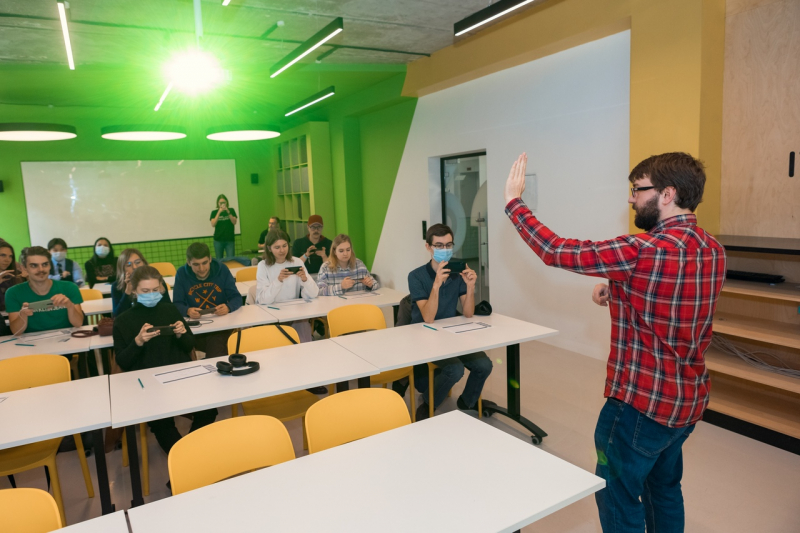
At his sound art workshop, Andrey Bundin, a composer, media artist, and author of the project Smartphony.io, demonstrated to the attendees how to create music using mobile devices. Turns out, a regular smartphone can easily serve as the control panel for professional sound software.
The workshop’s participants got to know about the various mobile apps used to create and perform music, as well as the latest advances in the use of smartphones in music. Of special interest were interactive installations that make use of the viewers’ own devices. For instance, the installation Drops, developed by IRCAM (Institute for Research and Coordination in Acoustics/Music, France), allows individuals to exchange signals between their phones, thus creating a sound chain that echoes from each device’s speakers.
As practice, the participants used their smartphones to create new music. They used the PhonoPaper app to scan sheet music and convert it into sound. The result was a smartphone orchestra – an authentic Art & Science performance by the workshop’s attendees.
Tying up the session, Andrey Bundin presented his latest work – the Motion Vox app, available for download in the near future. The participants, meanwhile, enjoyed a chance to beta-test the app, which allows users to create fascinating works that will later be included in the app’s built-in library.
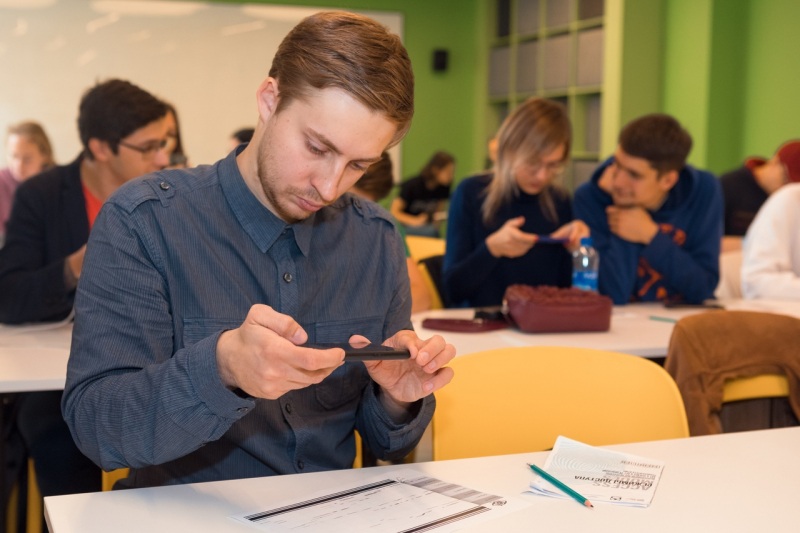
Playing matchmaker
In addition to the workshops, the Art & Science Marathon included a unique event called Speed Science Dating. Usually, the speed dating format centers on finding a romantic partner, but this time, the participants looked for colleagues and partners for their future collaborations. Still, the organizing team thought that, aside from shared interests and fields of study, each participant’s personal views and ideologies are just as important. For that purpose, the artists and scientists in attendance asked each other questions from a variation on the Proust Questionnaire and psychologist Arthur Aron’s 36 questions that lead to love – all split into “art” and “science” sections.
According to Ilia Kronchev, the event’s mediator and an art historian and curator, the event was similar to a mediation with elements of an in-depth interview. In the course of 10 four-minute sessions, the participants asked each other questions that they themselves felt partial too, thus learning more about the interlocutor’s work and personality.

“Everyone has their own philosophy, their perspective on life. My task during this event was to enable the partners to share their views and concerns; everyone we meet in our lives, whether we like them or not, teaches us something,” explains Ilia. “Every person is our own mirror. I was interested in finding out whether the people would be able to learn more about themselves by talking to others. The other goal was, of course, to enable networking.”
Students of many fields took part in speed dating: optical engineering, innovative entrepreneurship, ecology, art, creative production, and others. According to the participants, the event charged them emotionally and allowed them to hear from others, encounter different opinions, and understand and process them. In addition, students of other universities got to learn more about Art & Science initiatives at ITMO University.
The man who sent messages into space
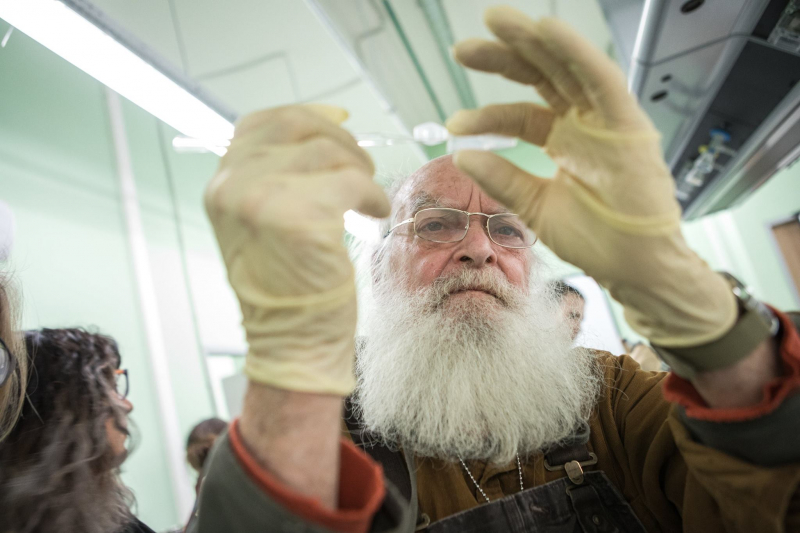
The marathon concluded with a talk by Dmitry Bulatov, an Art & Science figure well-known in Russia and abroad. He spoke about the early works of Joe Davis, a pioneer of science art and founder of synthetic biology, and presented the documentary Heaven and Earth and Joe Davis, which was shown to the guests of the event.
According to Dmitry Bulatov, “there is no more sense in contrasting the ideas of artificial and natural life. We’ve shifted from manipulating more-or-less inanimate objects to creating more-or-less animate ones.” That is why a major percentage of Art & Science projects deal with nature in one way or another.
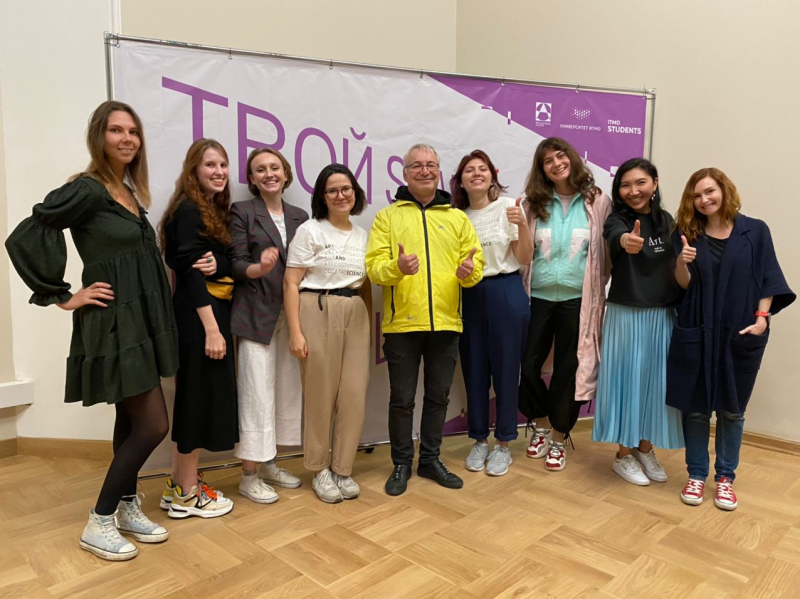
Art & Science at ITMO University
In 2018, ITMO University launched Russia’s first-ever Master’s program in Art & Science that brought together leading artists and scientists. The program trains specialists able to respond to the global challenges of the 21st century. Working alongside established curators, artists, and researchers, its students create their own art projects using the language of modern technology.
The program is taught In English. In its first year (2018), 8 students enrolled in the program; in 2019, 20 students enrolled. This year, 22 students from St. Petersburg, Novorossiysk, Krasnoyarsk, Kazakhstan, and India enrolled in the program.
Admissions are open to graduates of technical and art majors alike – as long as they express interest in studying the opportunities for interdisciplinary dialogue and artistic collaboration. This year’s batch of students includes culturologists, historians, designers, psychologists, architects, biologists, engineers, philologists, and economists.
